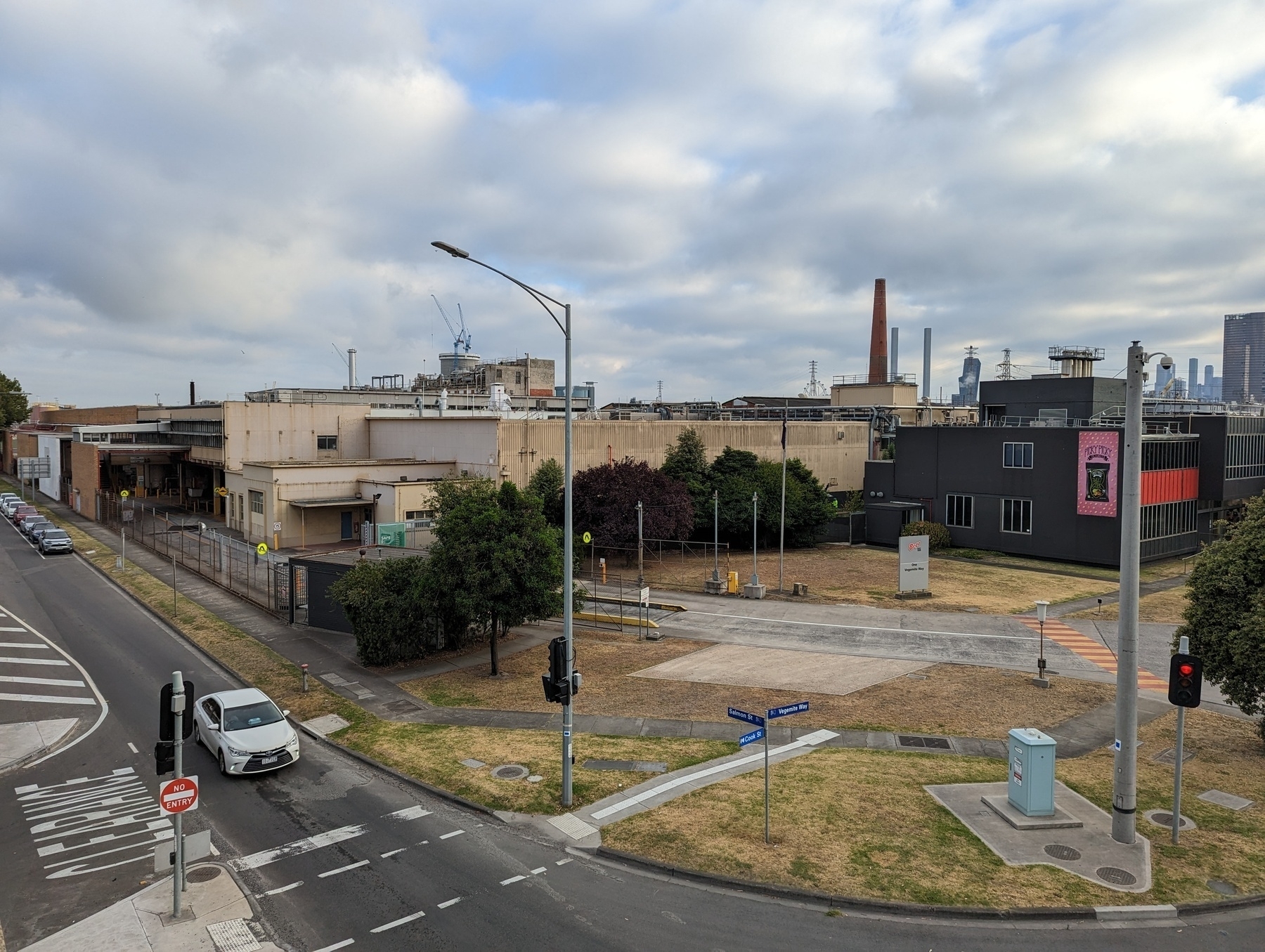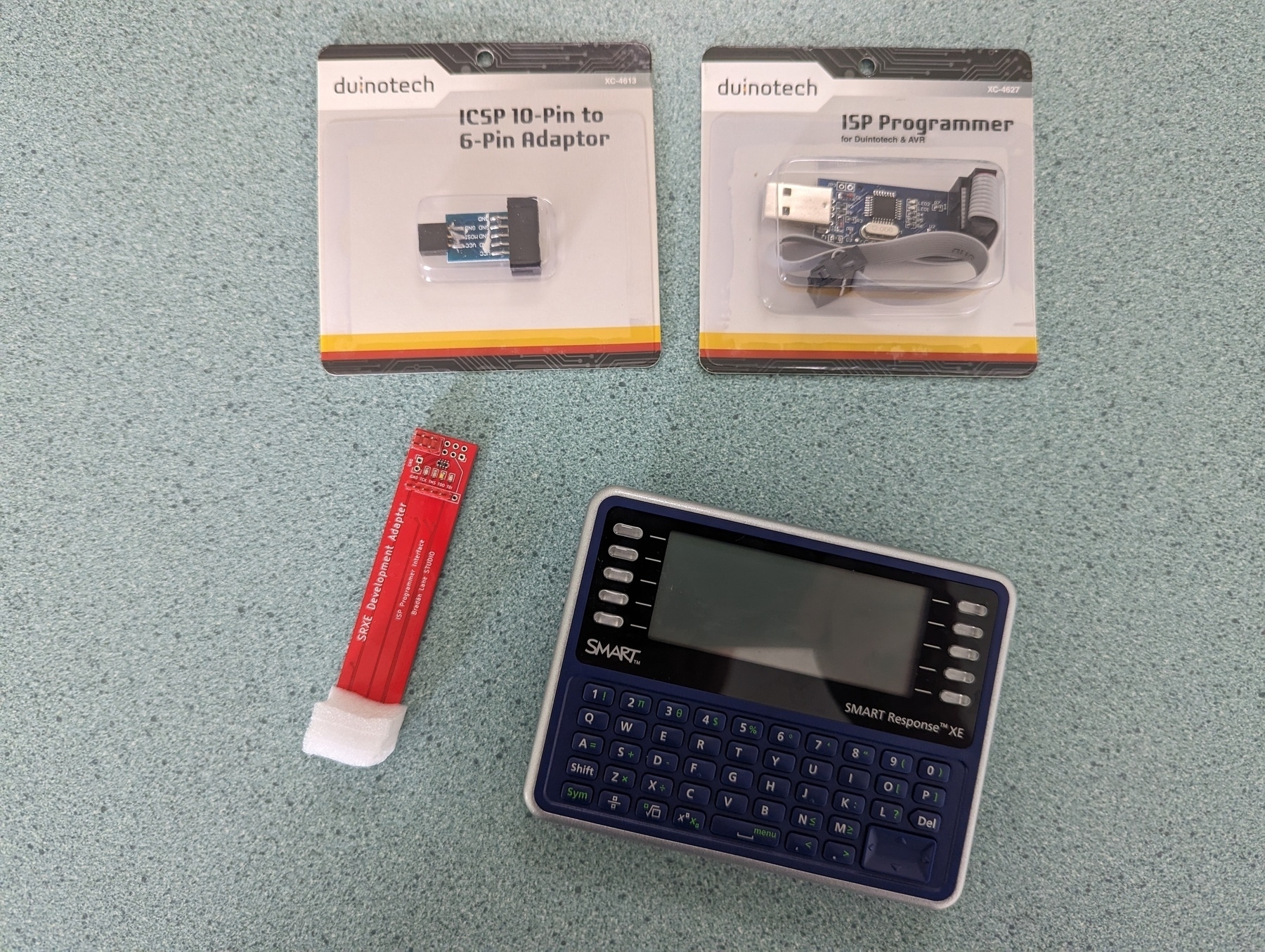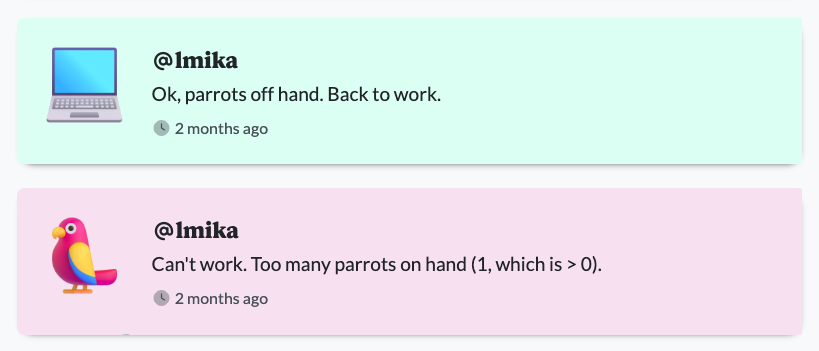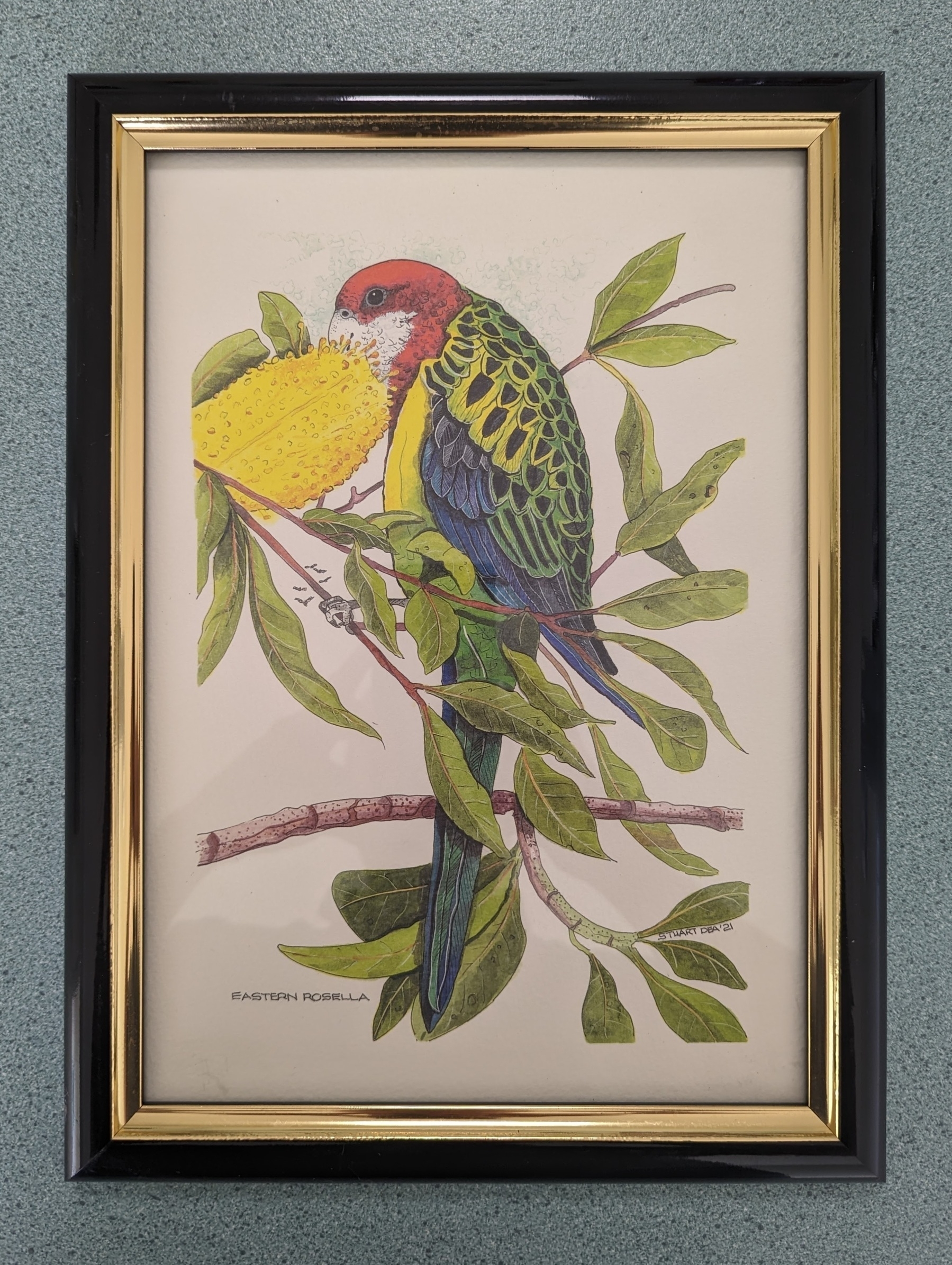-
A Rambling Thought About The App-Only Social Networks
Re-reading this post got me wondering how much traction Hive and Post are getting from the Twitter exodus. I am aware that Hive had to deal with a vulnerability and had to shut down while they fixed it. I don’t know much about Post apart it being another VC backed social network. But unless you’re a gamer attracted to Hive, and… 🤷1 heading to Post, is there anyone else using them? Continue reading →
-
It’s been a rare (but not unprecedented) three coffee and one caffeinated tea kind of morning today. 😴
-
The cafe I go to has started playing music where I sit. I find music at a cafe distracting, mainly because I find myself paying attention to the music instead of what I was doing. Fortunately it’s music I don’t find appealing. But even so, bad music is still not no music.
-
I never considered myself someone who believed that Go must’ve had generics from the start. I appreciated that the designers added them to the language, but I though I’d could be just as effective writing Go code if they chose not to.
I don’t believe that anymore.
I’ve found generics in Go to be a major improvement to the language. It now means that I can now use higher order functions that operate on collections, like “map” or “filter”, in a more natural way. I got use to these functions while working in languages that had them (Python, Ruby, JavaScript, Java 1.8) and they’ve been so useful that I wished Go had them as well.
There was no technical reason for Go not to have these functions, but they would have had to use the
interface{}type to be useful, meaning that there was no type safety built-in and your code would be littered with type assertions. This was such a turn-off that most of the time I didn’t bother with considering higher order functions, and just wrote a for loop by hand to convert types in one slice to types in another slice. Trivial to write, but just so boring.Now with generics, these higher order functions can be made type safe, and there is no longer a need for type assertions to use them. These made them viable once more, and I’ve found myself using them a fair bit recently. Not having to write yet another for lop has made coding fun again.
-
🔗 The Magic of Small Databases
I kinda want this but for internal databases. There’ve been several times at work where I’ve had to collect semi-structured information in a spreadsheet or a wiki page comprised solely of tables. There’s always some loosely defined convention around how to represent it (use this colour to indicate this particular state) or when it should be changed (change this label to “In Review” until these people have seen it and then change it to “Confirmed”).
One example is how we manage releases: which services we’re pushing out and what commits they are, which environments it’s been deployed to or tested in, whether the other teams or the person on-call are aware of it and have signed off, etc. This is all managed in wiki pages that follow a standard layout, and it’s… okay. It was a convention that has grown out over time as we were working out our release procedure. And it made sense keeping it relatively informal as we were trying to work out our groove. But that groove has been formed now, and it would be nice to formalise the process. But doing so means that there’s a lot of manual labour keeping these release documents correct and up to date. And since it’s all in a centrally managed wiki, it’s difficult to automate away things that are managed by other systems like our code repositories.
A tool that can be hosted on-prem which will allow anyone to spin up a new document-base database (either for the team or themselves), define a very loose schema and some views, and put a very simple workflows and code macros would be great. The trick is trying to walk the line that separates something that basically is like a hosted version of Excel verses something that will require so much setup work that no-one will bother with it. I’d imagine that’s a tricky balancing act to follow.
-
Saw the following quote while reading this article:
You could fill a book with all I know, but with all I don’t know, you could fill a library.
— Unknown
Quite profound.
-
It’s 2023 now and podcasts are still saying that I should Google so-and-so to see an article they’re citing, instead of just putting a link in the show-notes. I understand that this is mainly because Apple’s podcasting app doesn’t support HTML with links. Maybe once they’ve stopped burning money on their podcast subscription play that seems to be going nowhere, they can take a look at fixing this. We’ve got linking technology now; we shouldn’t be afraid to use it.
-
On a train now peeking at someone’s laptop. His desktop is completely covered in document icons. And I mean completely, as in there’s no room for any more.
I’ve never seen this before. It’s both amazing and shocking at the same time.
-
Busses should use the tram lines more. I remember being taught that if a bus was driving on a tram line, it must be treated like a tram. This gives them dedicated lanes and certain priorities over cars. Don’t know why busses don’t do this.
-
Passing by the Vegemite factory on the way to work. You usually get a whiff of its signature smell when you walk by, but today it was particularly strong.

-
Ah, my Smart Response XE developer kit has arrived. Time for a new project.

-
Achievement unlocked: first spam email offering to identify and fix vulnerabilities in one of my GitHub projects (it’s open source: if there are any vulnerabilities, just raise a PR).
-
I hate the term “business logic.” Is there a better noun-phrase for things the software is meant to do that doesn’t sound corporatey? I guess “user flow” or “user experience” could work, but not everything I deal with involves the user directly.
-

Currently reading: Temeraire by Naomi Novik 📚
About half way through the first chapter but already very captivating. Started strong right out of the gate. HT to pluralistic.net, where it was highly recommended.
-
On the subject of birds, I was looking at my status.lol statuses this morning. There are only a handful on there but I saw these two and it made me smile. I obviously posted them while I was looking after my sisters cockatiels last November.

-
Putting up a new print today.

Original is by a local artist, although I didn’t get their name.
-
This is going to be an unpopular opinion but I cannot stand the MacOS development experience. I wanted to start a new project, a MacOS SwiftUI project, and once I went through the New Project flow, the first thing that happens is the preview craps out because the login to AppStore Connect cannot provision a certificate. To generate the preview of the “Hello World” app that was just created. Call me old fashion but the need to provision a certificate to generate a preview is a little unnecessary.
How do experience MacOS developers deal with crap like this? Honestly, I really feel for them devs going through all the shitty hoops Apple throws their way, as if attempting to build anything is a threat to their trillion dollar company. They really need to get some perspective.
Anyway, I’ll settle on using Go and Wails. I know how unpopular Electron-style apps are in the broader MacOS community (Wails doesn’t bundle Chrome so it’s not quite the same thing) but it’s a stack without any BS that I can rely on.
-
My 2023 Word
I think I’ve settled on my 2023 word of the year: generous. Specifically (although not exclusively) generous in the projects I work on. I’m always working on some form of software in my spare time, but most of the time I keep this software just for myself. I want to do less of this, and start sharing it with others. You could say that I want to get better at shipping, but shipping to me is making the software usable for what it’s designed for, and for many of the projects I build, it’s only designed for me and my needs. Continue reading →
-
Looking at the “backlog” of things to work on for Dynamo-Browse before I set it aside. I’ll fix a few bugs and add a few small features that I’ve found myself really wanting. The short list is as follows:
- Fix the activity indicator that is sometimes not clearing when a long running task is finished.
- Fix a bug in which executing a query expression with just the sort key does nothing. I suspect this has something to do with the query planner somehow getting confused if the sort key is used but the partition key is not.
- Fix a bug where
set default-limitsreturns a bad value. - Add a way to describe the table, i.e. show keys, indices, etc. This should also be made available to scripts.
- Add a way to “goto” a particular row, that is select rows just by entering the value of the partition and optionally the sort key.
I’ll start with these and see how I go.
Oh, and one more thing: I will need to kill my darlings, namely the other commands in the “audax” repository that I’ve hacked togeather. They’re mildly useful — one of them is used to browse SSM parameters and another is used to view JSON log files — but they’re unloved and barely functional. I’ll move them out of the “audax” repository and rename this repo to “dynamo-browse”, just to make it less confusing for everyone.
-
I think I’ll take a little break from Dynamo-Browse. There’s a list of small features that are on my TODO list. I might do one or two of them over the next week, then cut and document a release, and leave it for a while.
I’m still using Dynamo-Browse pretty much every day at work, but it feels a little demotivating being the only person that’s using it. Even those at work seem like they’ve moved on. And I can understand that: it’s not the most intuitive bit of software out there. And I get the sense that it’s time to do something new. Maybe an online service or something. 🤔
-
Updates To My Online Presence
Making some changes to my online presence. The first is moving my knowledge base site from a set of HTML pages generated from a bespoke tool to one managed by Hugo. I wrote about that already so there’s nothing new to report here, apart from changing the domain name: I guess I finally fell out of love for “tecknow.space”. The new domain is simply technote.wiki. I originally wanted “technotes.wiki” — note the S — but I ran into a few problems trying to set this up in Netlify. Continue reading →
-
Discovered that the cafe I go to offers raisin toast. It’s too early for hot cross buns but the last couple of days have been relatively cool and my autumn dietary cravings kicked in a little early (it’ll warm up again in about a week so we’ll see how long they actually last).
-
Might be time for a new, larger monitor. The one I’m using now, a 12 year old Samsung SyncMaster P2250, has worked well for me (apart from turning itself on during the night for no particular reason). But it felt really cramped working on it yesterday, and not for the first time.
-
I’m cautiously optimistic that upgrading my iPad to iPadOS 16.2 has fixed the keyboard issue I’ve been experiencing. It’s been two days and I haven’t needed to reconnect the keyboard or restart the iPad. Hoping it was just a software problem all along.
Update: Ok, I may have spoken too soon. It started flaking out again during lunch. Slightly better than it was a few days ago, but still problematic.
-
🎙 Really Specific Stories: John Siracusa
As an avid fan of all of John’s podcasts, I’ve been looking forward to this episode of Really Specific Stories for a while. I’m please to say that @martinfeld does not disappoint. A fantastic listen.